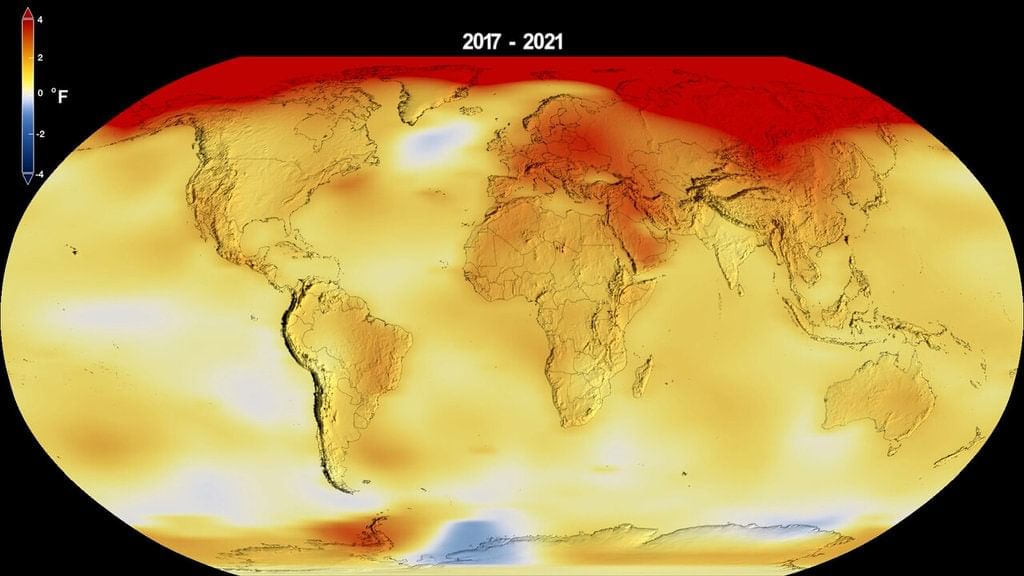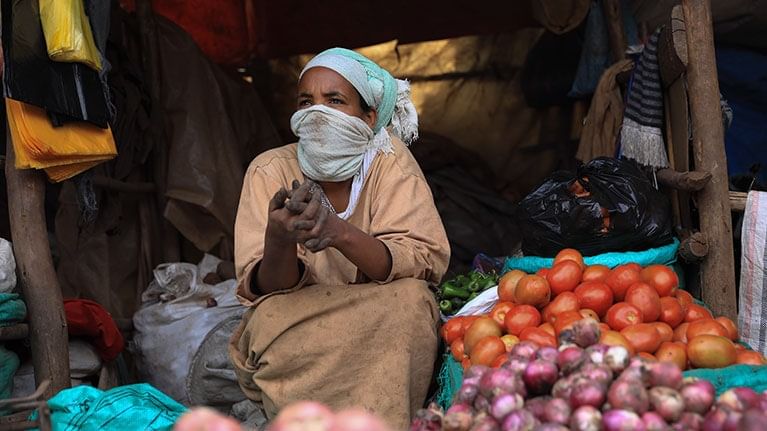UPSC Daily Current Affairs- January 19, 2022 | Current Affairs: Daily, Weekly & Monthly - CLAT PDF Download
GS-I
Guru Ravidas

Context
- The postponement of the Assembly elections in Punjab to February 20 underlines the importance of the Ravidassia community in the state.
About Issue
- Several political parties had urged the Election Commission for a postponement as the earlier date of February 14 would have clashed with Guru Ravidas Jayanti, an annual occasion during which Ravidassias travel to Varanasi in large numbers.
- Many of them take a special train organised by the Dera Sachkhand Ballan in Jalandhar, the largest dera of the Ravidassias.
Who are the Ravidassias?
- The Ravidassias are a Dalit community of whom the bulk — nearly 12 lakh — live in the Doaba region. The Dera Sachkhand Ballan, their largest dera with 20 lakh followers worldwide, was founded in the early 20th century by Baba Sant Pipal Das.
- Once closely connected with Sikhism, the dera severed these decades-old ties in 2010, and announced they would follow the Ravidassia religion. The dera made the announcement on Guru Ravidas Jayanti in Varanasi.
- From 2010, the Dera Sachkhand Ballan started replacing the Guru Granth Sahib with its own Granth, Amritbani, carrying 200 hymns of Guru Ravidas, in Ravidassia temples and gurdwaras.
About Guru Ravidas
- Guru Ravidas was a North Indian mystic poet of the bhakti movement.
- While the exact year of his birth is not known, it is believed that the saint was born in 1377 C.E.
- Guru Ravidas Jayanti is celebrated on Magh Purnima, which is the full moon day in the Hindu calendar month of Magha.
- The Adi Granth of Sikhs, in addition to the Panchvani are the two of the oldest documented sources of the literary works of Guru Ravidas.
- Notably, he belonged to an untouchable caste and suffered a lot of atrocities as a result. However, the saint chose to focus on spiritual pursuits and also penned several devotional songs which made a huge impact in the Bhakti movement during the 14th to 16th century CE.
- He is believed to be a disciple of the bhakti saint-poet Ramanandaand a contemporary of the bhakti saint-poet Kabir.
- One of his famous disciples was the saint, Mirabai.
- Among Ravidas’s moral and intellectual achievements were the conception of “Begampura”, a city that knows no sorrow; and a society where caste and class have ceased to matter.
Guru Ravidas Teachings
- Guru Ravidas spoke against the caste divisions and spoke of removing them to promote unity. His teachings resonated with the people, leading to a religion being born called the Ravidassia religion, or Ravidassia Dharam based on his teachings.
- He taught about the omnipresence of God and said that a human soul is a particle of God and hence Ravidas rejected the idea that people considered lower caste cannot meet God. He said in his teachings that the only way to meet God was to free the mind from the duality.
Goat Head Yogini

Context
- Recently, the Union Minister of Culture announced that a 10th century stone idol of Goat Head Yogini is being returned to India.
- It had been illegally removed sometime in the 1980s from a temple in Lokhari, Banda, Uttar Pradesh.
About Goat Head Yogini
- The sculpture is of a goat-headed Yogini that originally belonged to a group of stone deities in sandstone and was installed in Lokhari temple.
- These had been the subject of a study by Indian scholar Vidya Dahejia on behalf of the National Museum in New Delhi in 1986 which was later published under the title, “Yogini Cult and Temples: A Tantric Tradition.
- It is learned that the said sculpture had briefly surfaced in the art market in London in 1988.
- In October 2021, the High Commission of India received information about the finding of a goat-headed Yogini Sculpture that had matched the description of the Lokhari set, in the garden of a private residence near London.
- India Pride project Singapore and Art Recovery International, London swiftly assisted the High Commission of India, London in the identification and recovery of the Statue while the High Commission of India processed the requisite documentation with local and Indian authorities.
Similar sculpture
- Interestingly, a similar sculpture of the buffalo-headed Vrishanana Yogini, apparently stolen from the same temple at Lokhari village, had been recovered and repatriated by the Embassy of India, Paris in 2013.
- The Vrishanana Yogini was installed in the National Museum, New Delhi in September 2013.
Government’s initiative
- The Ministry of Culture in collaboration with the Ministry of External Affairs has been engaging in repatriating antiquities and artefacts belonging to India.
- In the last seven years, 75% of India’s stolen heritage has been returned to India. Further, since 1976, a total of 54 antiquities have been retrieved from foreign countries.
GS-II
Preventing genocide

Context
- Incendiary speeches at a religious assembly include calls for the genocide of Muslims in India and can be seen as part of an ongoing pattern of targeting minorities.
No legislation enacted by India
- Since signing the Genocide Convention and ratifying it, to date India has not enacted any legislation in accordance with Article VI of the Genocide Convention.
- At the outset, India is in violation of its international obligation to criminalise genocide within its domestic law per Articles V, VI and VII, and to take all means to ensure the prevention of genocide.
- Indian domestic law shows that there are no comparable provisions for the prosecution of any mass crimes, least of all genocide.
- Indian Penal Code provisions relating to rioting, unlawful assembly and ‘promoting enmity between different groups’ do not embody the basic elements of the crime of genocide, which is against a collectivity or a group, with the specific intent to cause its destruction.
- These also do not pertain to another key aspect of the Genocide Convention – that of prevention, and creating the conditions in which such hate speech and other associated acts are not allowed to flourish.
Significance of the Gambia’s proceedings before the ICJ against Myanmar
- The Gambia has initiated proceedings before the International Court of Justice (ICJ) against Myanmar on the basis of the Convention.
- The ICJ, relying on a previous case of Belgium v. Senegal, stated, “It follows that any State party to the Genocide Convention, and not only a specially affected State, may invoke the responsibility of another State party with a view to ascertaining the alleged failure to comply with its obligations erga omnes partes, and to bring that failure to an end.”
Conclusion
- It is more imperative than ever that international legal protections against genocide are incorporated in domestic legislation. Furthermore, the fact that India has international legal obligations under the Genocide Convention which it is not adhering to must be rectified.
2021 Sixth Warmest Year

Context
- Recently, two American agencies have released data showing that 2021 was the world’s sixth warmest year on record.
- And the last 10 years were the warmest since record-keeping began in 1880.
- The data was collected by the US. space agency NASA and the National Oceanic and Atmospheric Administration (NOAA).
Earth in 2021
- Earth in 2021 was about 1.1 degrees Celsius warmer than the late 19th century average, the start of the industrial revolution.
Northern and Southern Hemisphere
- The Northern Hemisphere land surface temperature was the third highest on record — 2016 (second) and 2020 (first) were warmer.
- The 2021 Southern Hemisphere surface temperature was the ninth highest on record.
Sea Surface Temperatures
- Record-high sea surface temperatures were observed across parts of the Atlantic and Pacific oceans.
- The upper ocean heat content was record high in 2021, surpassing the previous record set in 2020.
- The seven highest ocean heat content have all occurred in the last seven years (2015-2021).
Antarctic Sea
- Antarctic sea ice extent during December 2021 was 3.55 million square miles.
- This value is 11.6% below average and was the third-smallest December extent on record.
- Only December of 2016 and 2018 had a smaller extent.
Effects of La Niña
- Effects of La Niña kept world temperatures lower.
- La Niña is a weather pattern that happens in the Pacific Ocean but affects weather around the world.
- A La Niña event happens when ocean surface waters cool along the Pacific coast of the South American tropics. This takes place about every two to seven years.
Reasons for the Warming Trend
- This warming trend around the globe is due to human activities that have increased emissions of carbon dioxide and other greenhouse gases into the atmosphere.
- The planet is already seeing the effects of global warming: Arctic sea ice is declining, sea levels are rising, wildfires are becoming more severe and animal migration patterns are shifting.
Rising Temperature in India
- The Intergovernmental Panel on Climate Change (IPCC) released the first part of its Sixth Assessment Report (AR6) titled Climate Change 2021: The Physical Science Basis in August, 2021.
- Indian Sub-continent Specific Findings
- Heatwaves: Heatwaves and humid heat stress will be more intense and frequent during the 21st century over South Asia.
- Monsoon: Changes in monsoon precipitation are also expected, with both annual and summer monsoon precipitation projected to increase.
- The South West Monsoon has declined over the past few decades because of the increase of aerosols, but once this reduces, the country will experience heavy monsoon rainfall.
- Sea Temperature: The Indian Ocean, which includes the Arabian Sea and Bay of Bengal, has warmed faster than the global average. The sea surface temperature over the Indian ocean is likely to increase by 1 to 2 °C when there is 1.5°C to 2°C global warming.
- Recent Climate Related Measures by India
- An ambitious climate action vision with five elements has been unveiled at UNFCCC COP26.
- Taking non-fossil energy capacity to 500 GW by 2030.
- Meeting 50% of energy requirements from renewable energy by 2030.
- Reducing total projected carbon emissions by one billion tons by 2030.
- Reducing the carbon intensity of the economy to less than 45% by 2030.
- Achieving the target of “net zero” by 2070.
- India now ranks fourth in terms of installed renewable energy capacity and non-fossil energy has increased by more than 25% in the past seven years and reached 40% of the total energy mix.
- India has also taken the lead in initiatives such as the International Solar Alliance (ISA) and Coalition for Disaster Resilient Infrastructure (CDRI).
GS-III
What the budget needs to do

Context
- We need to insure the most vulnerable against shocks such as Covid, but even more, we need to create good job opportunities for the unskilled. What can the budget do?
Impact on informal economy
- The last two quarters have seen a substantive recovery in the Indian economy.
- Corporate profitability of our largest firms has hit a new record this year.
- So have GST collections, another indicator of the formal economy, with an average monthly collection of Rs 1.2 trillion in the second and third quarters.
- The glass though is half full, the informal economy was particularly badly hit by Covid and its associated lockdowns.
- Small enterprises, retail, hospitality, and construction were all hammered.
- These were our main source of recent employment growth.
- Agricultural employment has risen in the last year-and-a-half, while manufacturing and services employment has fallen — this is the opposite of development.
- Informal service sector jobs may not seem like great jobs to us, but they are greatly prized relative to eking out a marginal existence in agriculture.
- We need to insure the most vulnerable against such shocks, but even more, we need to create good job opportunities for the unskilled, equip people at all levels to participate more fully in the modern economy, and systemically promote wider policies of inclusion.
What can the budget do?
- Create good jobs for unskilled: The way it can do so directly is through accelerating spending on infrastructure.
- The National Infrastructure Pipeline has identified a good set of projects.
- The government should be complimented for its intention and ambition; what we need now is implementation.
- Labour-intensive manufacturing: Most countries developed by putting millions to work in labour-intensive manufacturing.
- We do not have the huge firms in export-oriented labour-intensive sectors that employ millions in China, Vietnam, and Bangladesh.
- Bangladesh has thrived by putting millions to work in manufacturing. A booming garment sector employs 4.4 million.
- As 80 per cent of those employed in garment factories are women, Bangladesh has twice the female labour force participation ratio of India.
- Implement labour laws: In June and September 2020, the government passed four labour laws. These laws have since been left dormant. The budget should announce a time frame for implementation, notification by the Union government and then by the states.
- Investment in education and skilling: India has among the least skilled workforces in the world.
- Under 5 per cent of our workforce is formally skilled, compared to 96 per cent in South Korea, 75 per cent in Germany and 52 per cent in the US.
- That is why the work of the National Skills Development Corporation is so important.
- Can the budget specify it as an independent entity controlled and run by the private sector that is then held accountable for delivering on our skilling targets.
- Education is even more important, especially primary education.
- Pratham’s education reports make for sobering reading.
- The New Education Policy has a proposal that every second standard child should be able to read and do arithmetic at the second standard level as a foundation for further education.
- This welcome initiative must receive greater dedication and focus from both government and industry.
- School education is a state subject, so the Union budget can at best incentivise states to do the right things, say by linking the flow of additional funds to those that demonstrate improved second standard learning outcomes.
- As a part of CSR, many companies work actively with schools.
- Education is already the largest single area for CSR spending, accounting for one-third of the Rs 9,000 crore spent by the top 100 companies.
Conclusion
- Other policies for economic inclusion must go beyond social inclusion. These include measures like reducing tariffs to benefit millions of consumers instead of thousands of firms. Industrial policies that help all firms such as the ease of doing business, instead of incentivising a selected few.
World Employment and Social Outlook – Trends, 2022

Context
- Global unemployment is projected to stand at 207 million in 2022 (21 million more than in 2019 before the COVID-19 pandemic began) says ILO World Employment and Social Outlook – Trends 2022.
About World Employment and Social Outlook – Trends 2022
- The report examines the impacts of the crisis on global and regional trends in employment, unemployment and labour force participation, as well as on job quality, informal employment and working poverty.
- It also offers an extensive analysis of trends in temporary employment both before and during the COVID-19 crisis.
Key highlights
- Job Losses in 2022
- It is estimated that in 2022 around 40 million people will no longer be participating in the global labour force.
- The downgrade in the 2022 forecast reflects the impact of ever new variants of COVID-19 on the world of work.
- Global working hours in 2022 will be almost two per cent below their pre-pandemic level.
- This is equivalent to the loss of 52 million full-time jobs.
- Pauperization
- The pandemic has pushed millions of children into poverty.
- It is estimated that in 2020, an additional 30 million adults fell into extreme poverty (living on less than $1.90 per day in purchasing power parity) while being out of paid work.
- The number of extreme working poor — workers who do not earn enough through their work to keep themselves and their families above the poverty line — rose by eight million.
- Impact on women
- Women have been worse hit by the labour market crisis than men and this is likely to continue.
- The closing of education and training institutions will have long-term implications for young people, particularly those without internet access.
Key suggestions
- There is the need for a broad-based labour market recovery — the recovery must be human-centred, inclusive, sustainable and resilient.
- The recovery must be based on the principles of decent work — including health and safety, equity, social protection and social dialogue.
Houthi Attack on United Arab Emirates

Context
- A suspected drone attack on Monday in Abu Dhabi, the capital of UAE, caused multiple explosions in which three Indians were reportedly killed.
Who is behind the attack?
- The Shia Houthi rebels of Yemen have claimed responsibility for the attack.
About Houthis
- The roots of the Houthi movement can be traced to “Believing Youth” (Muntada al-Shahabal-Mu’min).
- It is a Zaydi revivalist group founded by Hussein al-Houthi and his father, Badr al-Din al-Houthi, in the early 1990s.
- Badr al-Din was an influential Zaydi cleric in northern Yemen.
- This group is inspired by the Iranian revolution of 1979 and the rise of Hezbollah in southern Lebanon in the 1980s.
- Badr al-Din and his sons started building vast social and religious networks among the Zaydis of Yemen, who make up roughly one-third of the Sunni-majority country’s population.
What led to the Houthis’ rise?
- When protests broke out in Yemen in 2011 as part of the Arab Spring protests that felled Tunisian and Egyptian dictators.
- The Houthis, now confident from their military victories and the support they enjoyed in Sadah, backed the agitation.
Why did Saudi Arabia attack Yemen?
- The rapid rise of the Houthis in Yemen set off alarm bells in Riyadh which saw them as Iranian proxies.
- Saudi Arabia, under Mohammed Bin Salman, started a military campaign in March 2015, hoping for a quick victory against the Houthis.
- But the Houthis had dug in, refusing to leave despite Saudi Arabia’s aerial blitzkrieg.
- With no effective allies on the ground and no way-out plan, the Saudi-led campaign went on with no tangible result.
- In the past six years, the Houthis have launched multiple attacks on Saudi cities from northern Yemen in retaliation for Saudi air strikes.
Not a one-way proxy war
- There are serious allegations against both the Saudis and the Houthis in the war.
- While the Saudi bombings caused a large number of civilian deaths, the Houthis were accused, by rights groups and Governments, of preventing aid, deploying forces in densely populated areas.
- Houthis have been using excessive force against civilians and peaceful protesters.
Why did the Houthis target the UAE?
- This is not the first time the Houthis attacked the UAE. In 2018, when the UAE-backed forces were making advances in Yemen, the Houthis claimed attacks against the Emirates.
- They stayed focussed entirely on Saudi Arabia and Saudi-backed forces inside Yemen.
Great Resignation

Context
- Recently, in the aftermath of Covid-19, large numbers of people are embracing the credo of “antiwork”, and walking out of their jobs, especially in the US and European countries.
- A record 4.3 million people resigned in August 2021, up 2,42,000 from July, according to the US Bureau of Labor Statistics (BLS).
- The American psychologist Anthony Klotz has called it the “Great Resignation” — a call to remap priorities in the work-life equation.
Impact of Covid
- While those opting out of work include, prominently, employees in the retail and hospitality sectors, many were willing to switch jobs or to re-evaluate their options.
- Many countries in Central and Eastern Europe, have recorded a fall in the skilled labour force.
- However, this could be due to stronger social safety nets.
- Living through and surviving pandemic lockdowns nudged many to see “work-free” living as a viable option.
Significance of Great Resignation
- Grievances about low pay, unrealistic deadlines and bad bosses bubbled up from subconscious depths to feed the impulse.
- This also means that these workers have market values beyond their existing employers.
- They are relying on their experience and contacts to bag better job opportunities or choose start-ups.
- There is a general apprehension that not enough capital allocation has been made in capacity building.
Indian Scenario
- Due to the absence of social security and unemployment benefits, there are no such phenomena in India.
- The luxury of walking out of jobs was not available to most in India.
- However, remote working has made it possible for corporates and employees to have flexible work models.
- Due to this, the jobs are moving towards people in tier II and tier III cities. Thereby, making a shift in India’s spatial economy.
- Also, work-from-home has triggered changes in the demand structure in the market.
- Further, Indians are switching their jobs in the IT and ITeS sectors.
- Several start-ups have become unicorns and many are hiring in bulk and are ready to pay significantly higher.
|
1375 docs|804 tests
|
FAQs on UPSC Daily Current Affairs- January 19, 2022 - Current Affairs: Daily, Weekly & Monthly - CLAT
| 1. What is the significance of UPSC in the article? |  |
| 2. What are the three sections of the UPSC exam mentioned in the article? |  |
| 3. What is the purpose of providing daily current affairs by UPSC? |  |
| 4. How can candidates benefit from regularly reading UPSC daily current affairs? |  |
| 5. What is the importance of frequently asked questions (FAQs) in the UPSC exam preparation? |  |
















